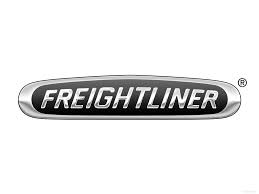Sprinter 2500 L5-2.7L DSL Turbo (2002)

If a voltage peak occurs on just one circuit, the receivers can identify this as a fault and ignore the voltage peak. If a short circuit or interruption occurs
on one of the two CAN circuits, a software-hardware linked safety concept allows switching to a single-line operation. The defective CAN circuit is shut
down. A specific data protocol controls how and when the participants can send and receive.
NOTE: It is important to note the CAN Bus circuits are used for intermodule communication only, and is no way connected to the K-Lines.
The following modules that use the CAN Bus on this vehicle are:
-
Automatic Temperature Control (ATC)
-
Controller Antilock Brake (CAB)
-
Engine Control Module (ECM)
-
Instrument Cluster (IC)
-
Sentry Key Remote Entry Module (SKREEM)
-
Shifter Assembly (SA)
-
Transmission Control Module (TCM)
Heating & A/C System
AUTOMATIC TEMPERATURE CONTROL (ATC)
SYSTEM CONTROLS
The ATC Module:
-
is fully addressable with the DRBIII(R).
-
The DRBIII(R) communicates with the ATC Module through the Diagnostic Link Connector (DLC) via a K-Line.
-
communicates with other modules over the Controller Area Network (CAN) C Bus.
-
controls A/C clutch operation.
-
controls EBL operation.
-
controls water cycle valve operation.
-
The water cycle valve is a normally open valve, meaning that it allows full engine coolant flow through the heater core when no power is
delivered to the valve. The ATC controls the valve with a pulse width signal. The lower the percentage of the pulse width signal the more the
valve is open.
-
controls Residual Heat Utilization (REST) function.
-
controls blower motor operation, providing four blower speeds (Low, M1, M2, & High).
-
controls recirculation air solenoid valve.
-
controls the mode door via cables.
-
controls the main power supply to the Heater Booster (if equipped).
-
uses air inlet temperature sensor, air outlet temperature sensor, and evaporator temperature sensor input, as well as data from other modules to
maintain occupant comfort levels.
SYSTEM DIAGNOSTICS
Fault detection is through active and stored Diagnostic Trouble Codes (DTCs)
-
DTCs are displayed by the DRBIII(R).
-
Active DTCs are those which currently exist in the system. The condition causing the fault must be repaired in order to clear this type of DTC.
-
Stored DTCs are those which occurred in the system since the ATC Module received the last clear diagnostic info message.
Testing Preparation & Diagnostics
Set the necessary system functions accordingly so that all of the following prerequisites are met prior to performing diagnostic tests on the ATC system:
1. Connect the DRBIII(R) to the DLC.
2. Place the shift lever in park.
3. Start the engine.
4. Set the blower to high speed.
5. Set the temperature selector to full cold.
6. Press air conditioning switch on.
7. With the DRBIII(R) in Sensors, verify that the:
a. ambient temperature is above 59° F (15° C).
b. refrigerant pressure is between 29 and 348 PSI (2 and 24 bar).
c. evaporator temperature is above 36.5° F (2.5° C).
d. coolant temperature is above 158° F (70° C).
When all of the prerequisites have been met, use the DRBIII(R) to record and erase all stored ATC DTCs, and then select System Tests, and run the
ATC Function Test. When complete, check to see if any active DTCs are present. If so, refer to the symptom list in the Heating & A/C category for the
diagnostic procedure(s). If there are no DTCs present, yet the performance seems less than ideal, use the DRBIII(R) to look at all sensor values and the
status of the various inputs and outputs to see if there is a deficiency detected that has not fully shut down the system. For additional information, refer to
Sensor Values and Input/Output Status under Diagnostic Tips and for evaporator temperature sensor and air outlet temperature sensor resistance to
